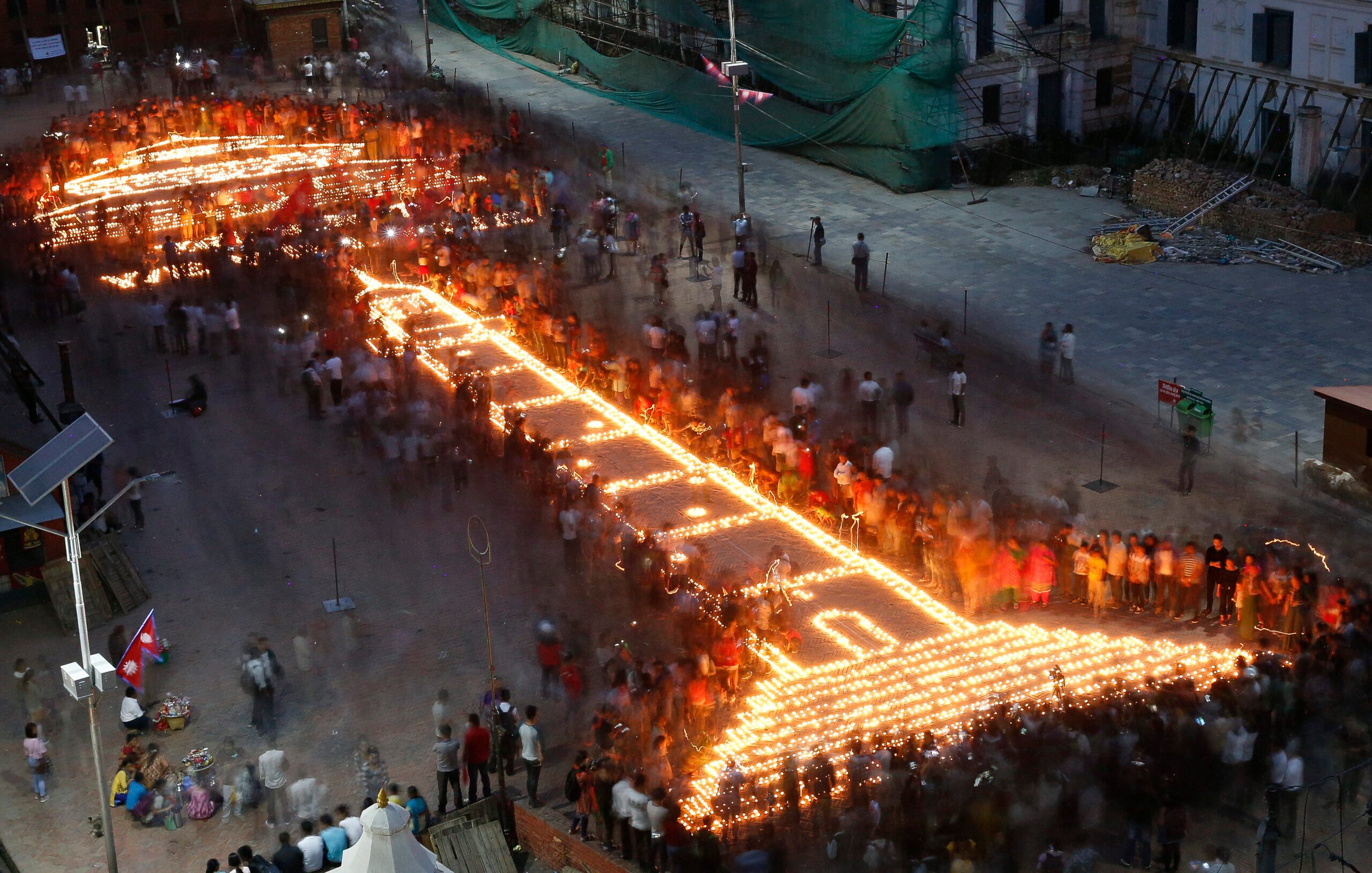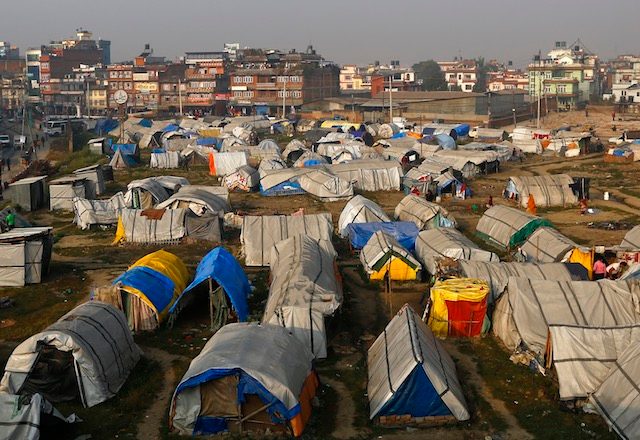SUMMARY
This is AI generated summarization, which may have errors. For context, always refer to the full article.

KATHMANDU, Nepal (4th UPDATE) – Nepal’s prime minister joined Buddhist monks at a prayer ceremony Monday, April 25, to mark the start of rebuilding at five ancient monuments destroyed in an earthquake that killed thousands and devastated the country’s rich cultural heritage.
The ceremony at the seventh-century Swayambhunath Temple complex came exactly a year after the quake struck, although the main commemorations for the dead were held Sunday, the anniversary by the Nepali calendar.
One of the Buddhist temples at the spectacular hilltop complex, a UNESCO world heritage site, was completely destroyed by the 7.8-magnitude quake.
Rebuilding work began Monday on that and four other monuments, including a temple in the historic town of Bhaktapur and two wooden pavilions once used for royal ceremonies that crumbled in the quake.
“They are treasures given to us by our ancestors… it is our responsibility to hand them down to the next generation the way they were handed down to us,” said Bhesh Narayan Dahal, director general of the government’s Department of Archaeology.
“We will begin reconstruction of other monuments as well, work has been slow but now it will pick up pace,” Dahal told Agence France-Presse.
About 700 monuments require rebuilding or repair. Many are major tourist draws, including Swayambhunath, known as the “Monkey Temple” because of the animals occupying the steps leading up to it.
While restoration work has begun on a handful of temples, including the fifth-century Changu Narayan complex, officials say it will be years before Nepal’s rich architectural heritage can be fully restored.
The rebuilding of houses has been even slower to start, and on Sunday protesters marched on government offices to demand faster reconstruction efforts.
The Red Cross says four million people are still living in flimsy shelters after the disaster, which killed nearly 9,000 people.
On Monday survivors were to hold a memorial service in Langtang, where the quake triggered a massive avalanche that destroyed an entire village, burying hundreds of locals and tourists at the height of trekking season.
“Our lamas (monks) have come to hold the ritual. There are many foreigners coming as well,” guesthouse owner Palsang Tamang told AFP.

‘Tourism has suffered’
On Everest, mountaineering teams caught up in the disaster observed a minute’s silence at 11:56 am – the time the earthquake hit – in memory of their fallen colleagues.
The mountain suffered its deadliest ever disaster when the quake triggered an avalanche that killed 18 people.
“This was an opportunity to remember those who died, those who were injured and the many people who worked so hard to rescue and treat the 100 patients,” Rachel Tullet, base camp manager for Jagged Globe, said in a blog post.
Nepal has issued 289 permits to mountaineers for the brief spring climbing season, which lasts from mid-April to May, and many have begun to ascend the world’s tallest peak.
“Tourism has suffered after the quake, but we did not see much impact (on Everest),” said tourism chief Sudarshan Prasad Dhakal.
“This could be because people who come to climb Everest already work in an adventurous, risky environment.”
A spokesman for Nepal’s National Reconstruction Authority (NRA), which is overseeing rebuilding, told AFP that work would soon start on schools and hospitals across quake-hit districts.
The disaster damaged about 8,000 schools and 1,200 health centres and Nepal’s government has come under fire for doing little to rebuild classrooms or rural medical facilities that are a lifeline for remote communities in hilly regions. – Paavan Mathema, AFP / Rappler.com
Add a comment
How does this make you feel?
There are no comments yet. Add your comment to start the conversation.